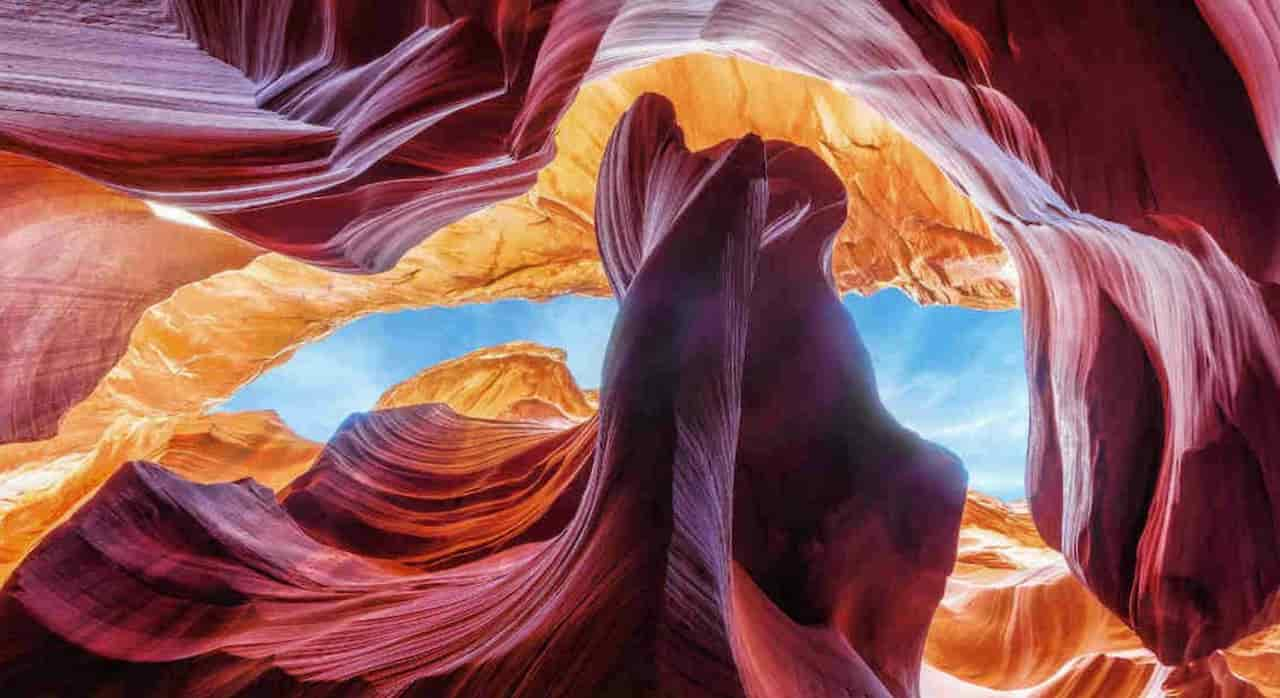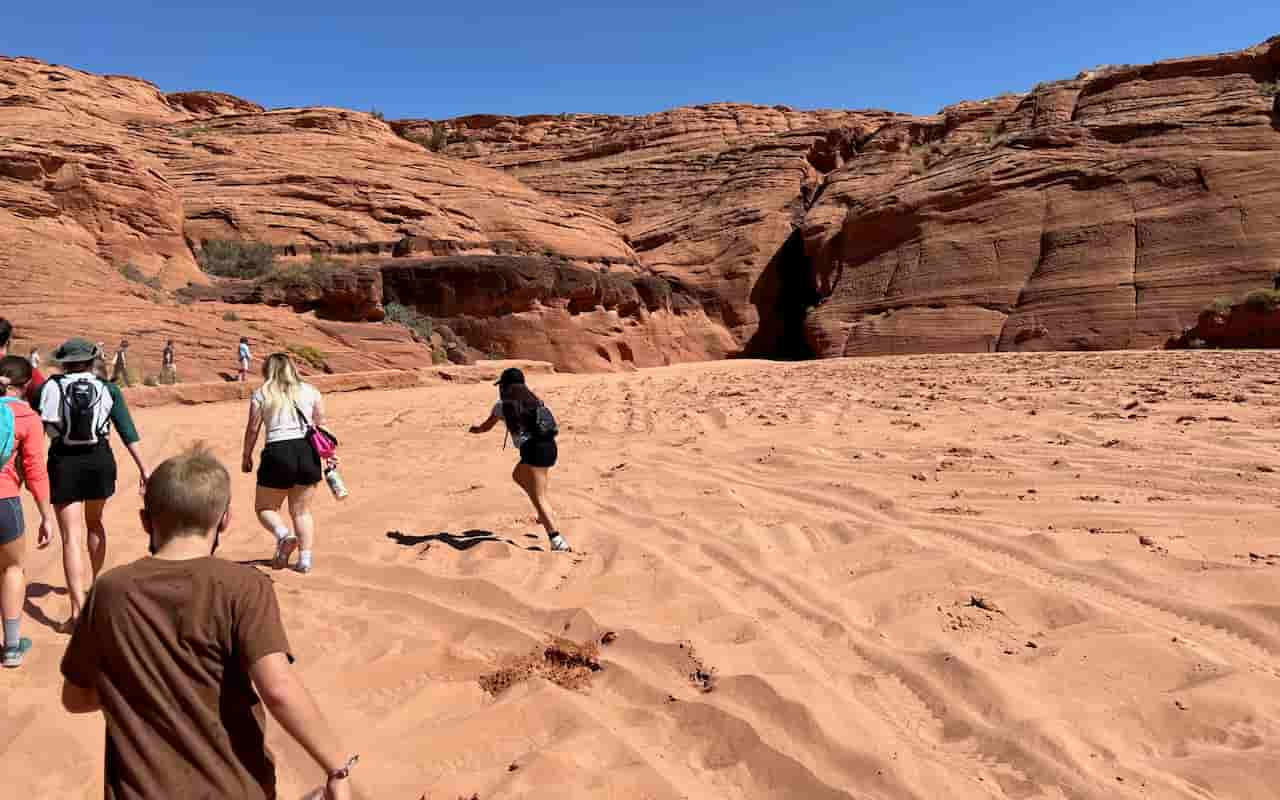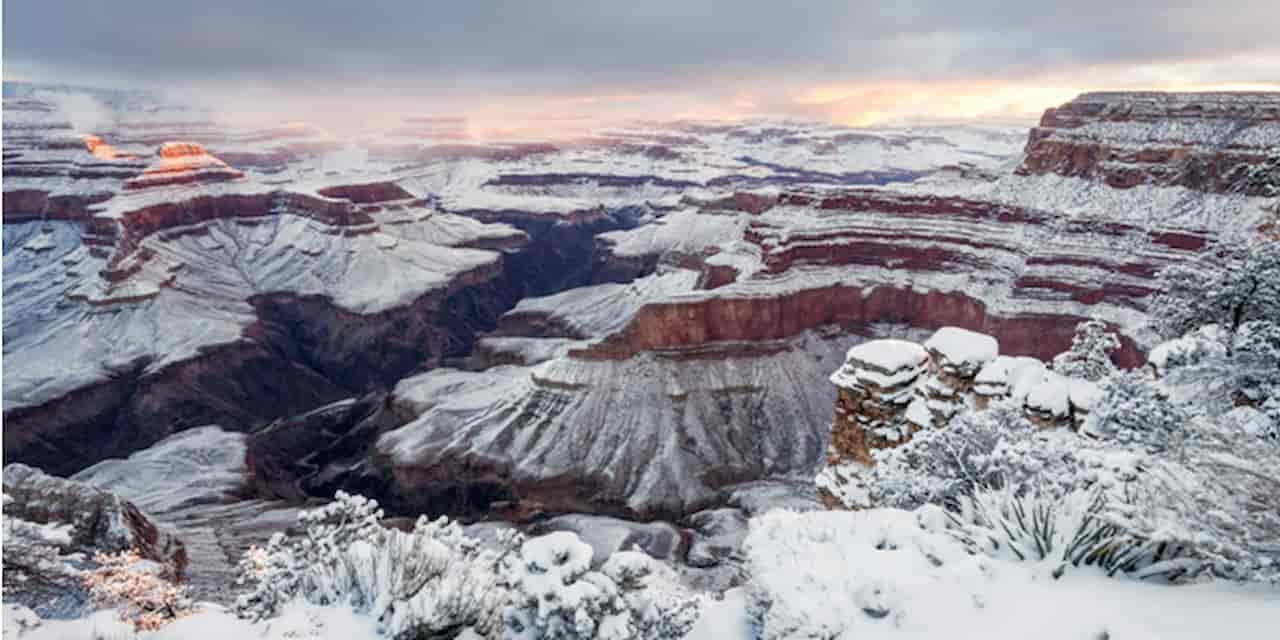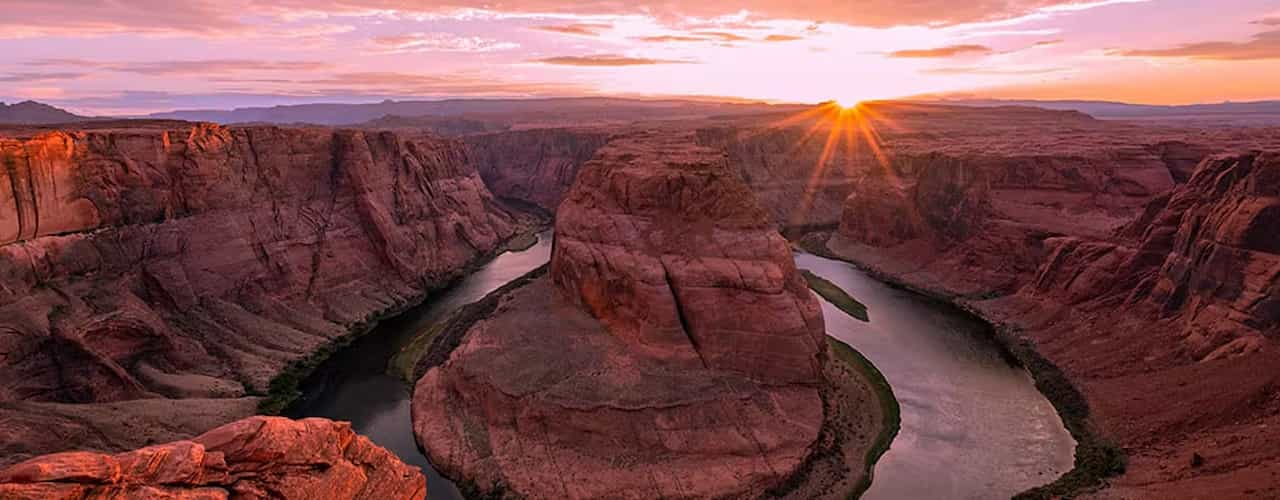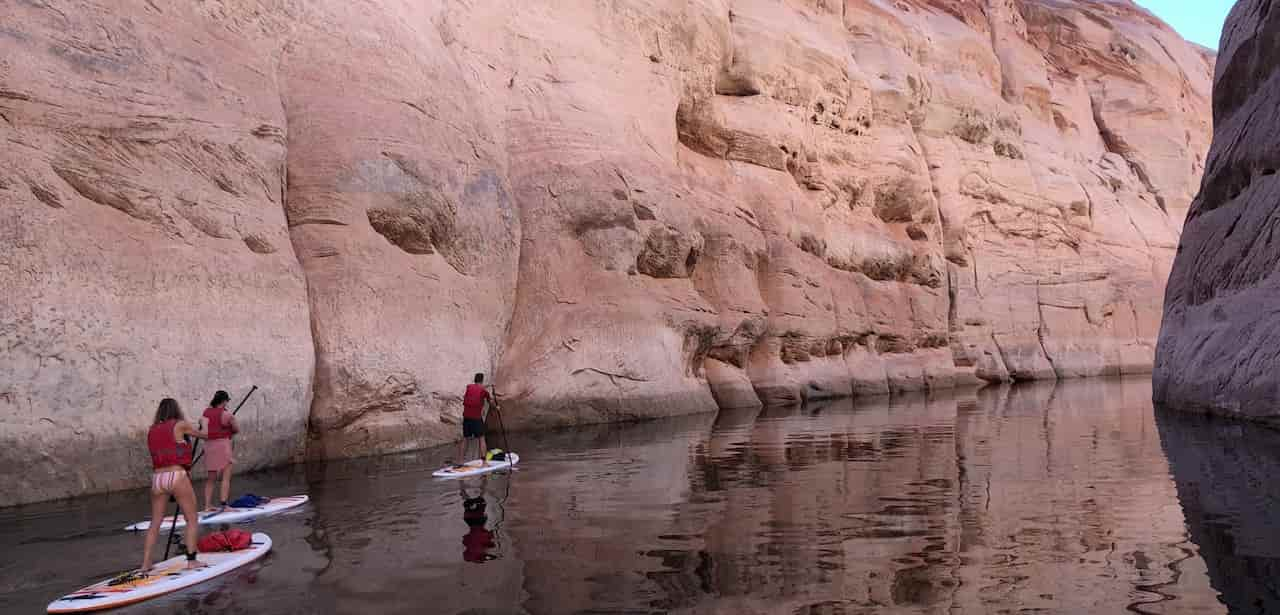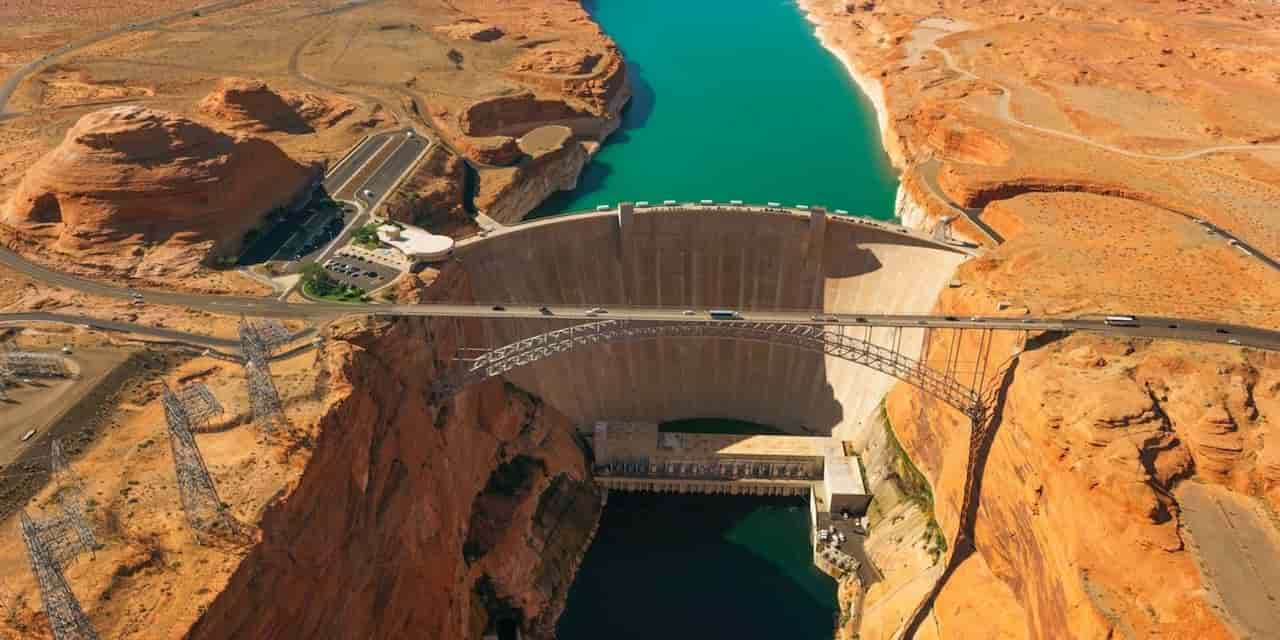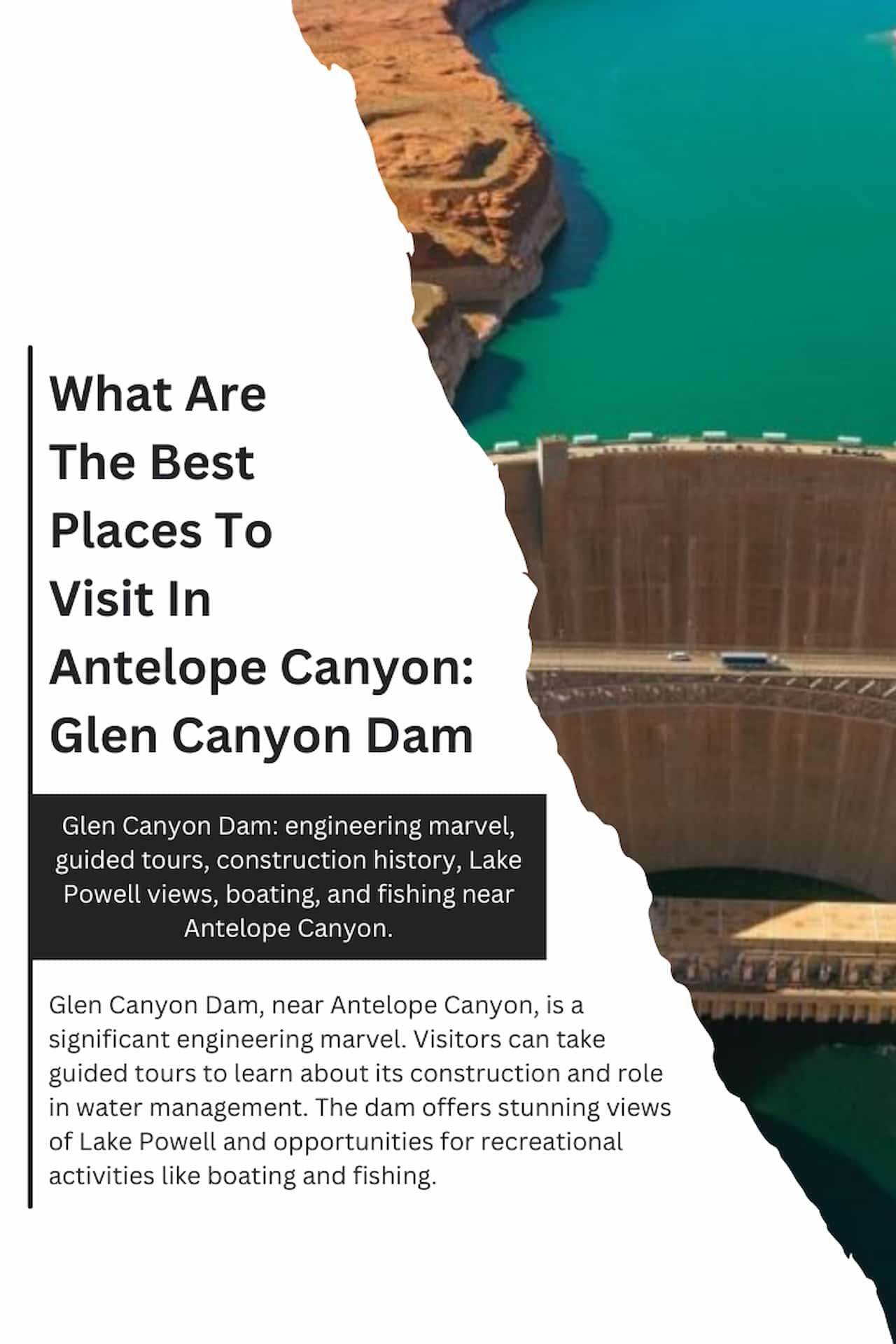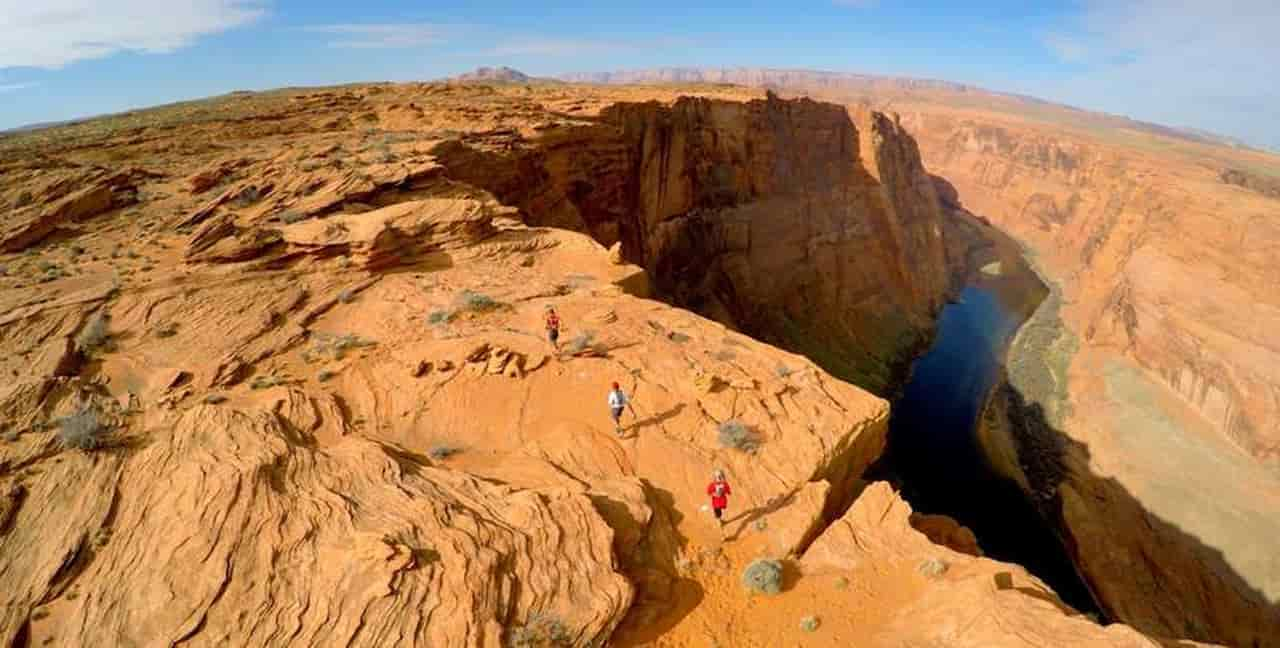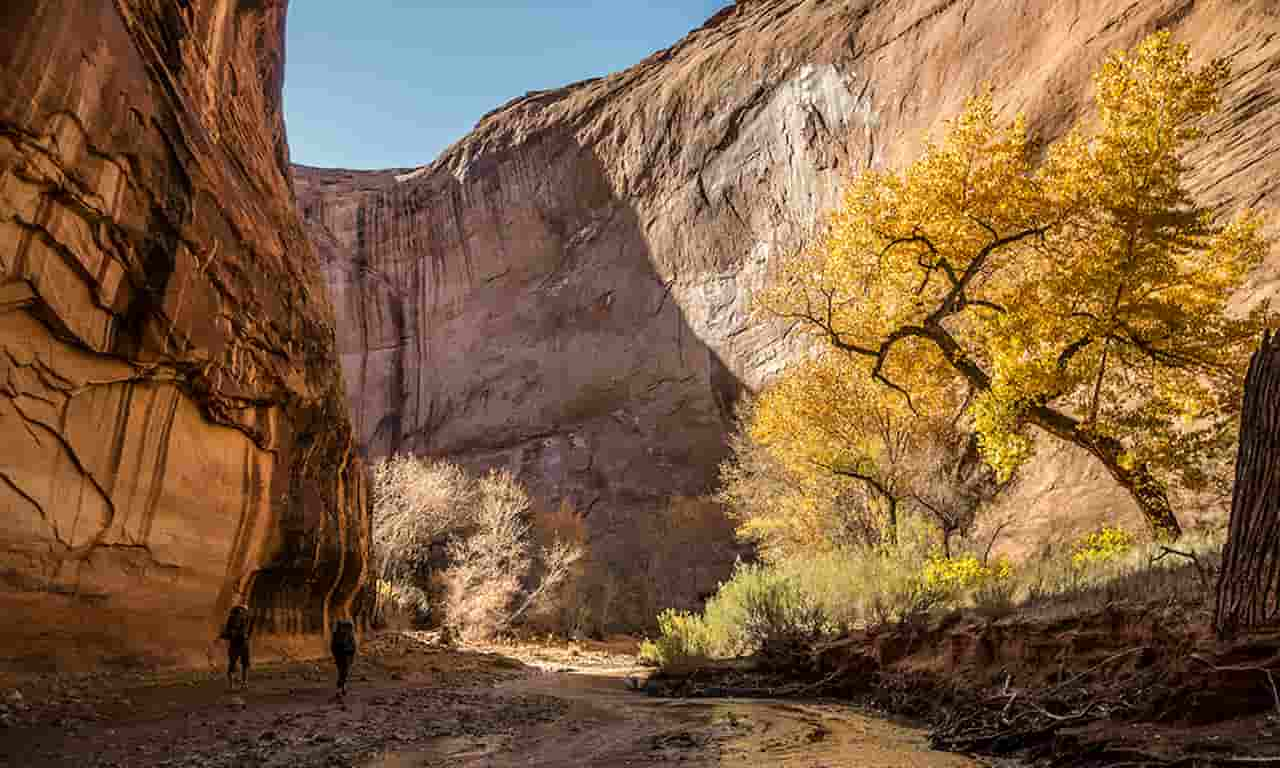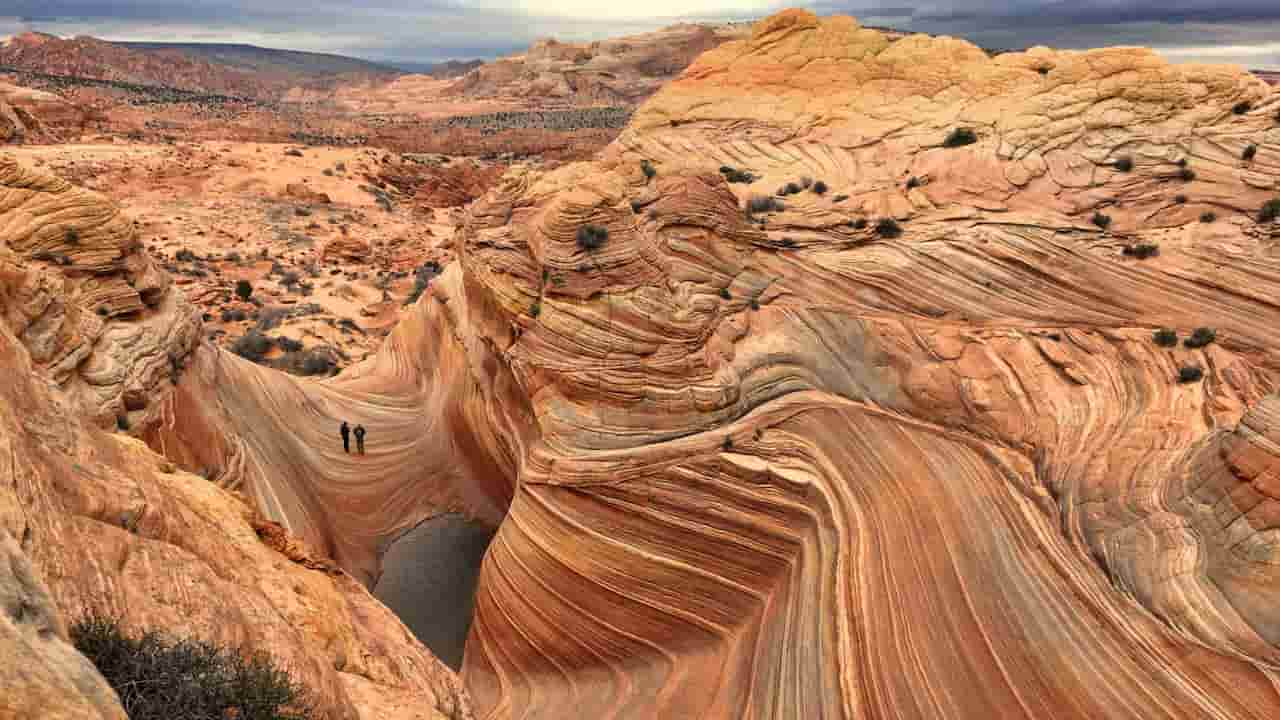Antelope Canyon, a breathtaking slot canyon in Arizona, draws visitors worldwide. Its winding sandstone walls and ethereal light beams create an otherworldly atmosphere that captivates photographers and nature enthusiasts alike. But when is the ideal time to experience this natural wonder? Let’s explore the factors influencing your visit and determine the best time to explore Antelope Canyon. Antelope Canyon experiences distinct seasons, each offering a unique experience. Spring (March to May) brings mild temperatures and occasional rain showers. The canyon’s colors are vibrant, and the chance of seeing light beams increases as the sun climbs higher in the sky.
Summer: June To August
It is the peak tourist season. The weather is hot and dry, with temperatures often soaring above 100°F (38°C). This is when the famous light beams are most visible, creating stunning photo opportunities. However, the canyon can get crowded, and flash floods are a risk during monsoon season.
Fall: September To November
Offers pleasant temperatures and fewer crowds. The light beams are still visible, though less intense than in summer. The changing colors of the surrounding landscape add to the area’s beauty.
Winter: December To February
It is the quietest season. Temperatures are excellent, and the canyon sees fewer visitors. While light beams are rare during this time, the softer light can create a serene atmosphere inside the canyon.
Light Beams And Photography
For many visitors, witnessing the iconic light beams is a top priority. These beams occur when sunlight enters the narrow openings at the top of the canyon, creating magical shafts of light. They’re most visible from late March to early October, with peak visibility from June to September. The best time to see the light beams is typically between 10 am and 1 pm when the sun is high in the sky. However, this timing can vary depending on the season and weather conditions. If photography is your primary goal, consider booking a photography tour. These specialized tours allow extended visits and often provide tripods and other equipment to help you capture the perfect shot.
Crowds And Tour Availability
Antelope Canyon’s popularity can get hectic, especially during peak season. Summer months have the highest number of visitors, with tours often booking weeks or months in advance. If you prefer a quieter experience, consider visiting during spring or fall shoulder seasons.
It’s important to note that you can only visit Antelope Canyon with a guided tour. As the canyon is on Navajo land, Navajo-owned companies run these tours. During peak season, tours run frequently throughout the day. In the off-season, there may be fewer tour options available.
Flash Flood Risk
Safety is paramount when visiting Antelope Canyon. The risk of flash floods is highest during the monsoon season, typically from July to September. While tour operators closely monitor weather conditions and will cancel tours if there’s a flood risk, it’s something to remember when planning your visit.
Pricing Considerations
Tour prices can vary depending on the season and type of tour. Peak season tours are generally more expensive, while off-season visits might offer better deals. Photography tours are pricier but provide more time in the canyon and specialized guidance for capturing stunning images.
Related Places To Visit
While Antelope Canyon is undoubtedly the star attraction, the surrounding area offers several other remarkable sites worth exploring:
Horseshoe Bend
Just a short drive from Antelope Canyon, this iconic meander of the Colorado River is a must-see. The view from the cliff edge is spectacular, especially at sunset.
Lake Powell
This massive reservoir offers boating, fishing, and water sports opportunities. You can also take scenic boat tours to explore its many canyons and rock formations.
Glen Canyon Dam
Visit the Carl Hayden Visitor Center to learn about the area’s geology and history, then walk across the dam for panoramic views of Lake Powell and the Colorado River.
Waterholes Canyon
Another slot canyon in the area, Waterholes, offers a less crowded alternative to Antelope Canyon. Exploring requires more physical effort but rewards visitors with stunning rock formations and fewer tourists.
Grand Staircase-Escalante National Monument:
This vast protected area showcases diverse landscapes, from slot canyons to desert plateaus. It’s perfect for hiking and backcountry exploration.
The Wave:
While extremely difficult to visit due to a strict permit system, this famous sandstone formation is a photographer’s dream. If you’re lucky enough to secure a permit, it’s well worth the effort.
Information About Antelope Canyon
Antelope Canyon has two separate slot canyons: Upper Antelope Canyon and Lower Antelope Canyon. Both are located on Navajo land near Page, Arizona. Upper Antelope Canyon, also known as “The Crack,” is the more famous and accessible to navigate. It’s known for its light beams and smoother, more flowing walls. The canyon floor is ground level, making it accessible for most visitors. Lower Antelope Canyon, nicknamed “The Corkscrew,” is narrower and requires climbing ladders and navigating stairs.
It’s less crowded than Upper Antelope Canyon and offers a more adventurous experience. The canyons were formed over millions of years by the erosion of Navajo sandstone, primarily due to flash flooding. The rushing water carved the smooth, curving walls that give the canyons their distinctive appearance.
The Navajo name for Upper Antelope Canyon is Tsé bighánílíní, which means “the place where water runs through rocks.” Lower Antelope Canyon is called Hazdistazí, or “spiral rock arches.” Photography in the canyons can be challenging due to the extreme contrasts between light and shadow. Many photographers use HDR techniques or bracketing to capture the full range of tones.
Conclusion
The best time to visit Antelope Canyon depends on your priorities. For the best light and photo opportunities, plan your trip between late spring and early fall, ideally during summer. If you prefer fewer crowds and don’t mind missing the light, consider a visit during the shoulder seasons or winter.
Regardless of when you visit, Antelope Canyon promises an unforgettable experience. Its sculpted walls and play of light create a natural masterpiece that must be seen and believed. Considering factors like weather, crowds, and personal preferences, you can plan the perfect trip to this extraordinary destination.
Remember to book your tour well in advance, especially if you’re visiting during peak season. And don’t forget to explore the other natural wonders in the area to make the most of your journey to this remarkable corner of the American Southwest.
